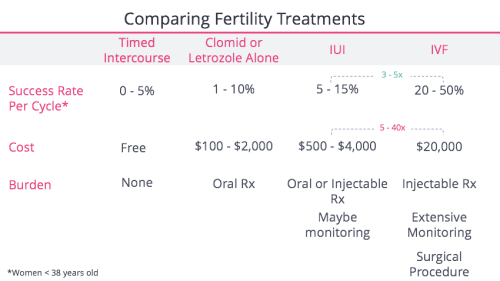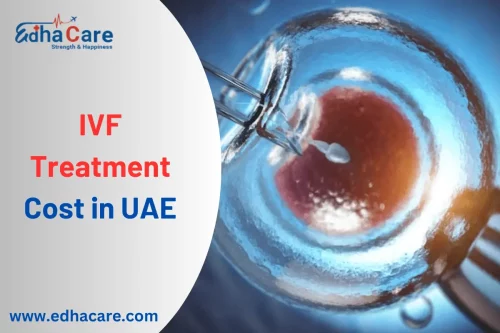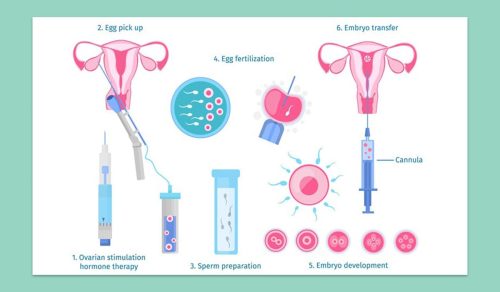How Many Follicles Do You Need for IVF Success?
If you’re diving into the world of in vitro fertilization (IVF), you’ve probably heard the term “follicles” thrown around a lot. Maybe your doctor mentioned them during an ultrasound, or you’ve seen it pop up in online forums. It’s one of those words that sounds super technical but is actually a key piece of the IVF puzzle. So, how many follicles do you really need for IVF to work? Is there a magic number that guarantees a baby? Spoiler alert: it’s not that simple, but don’t worry—I’ve got you covered with all the details you need to feel confident and informed.
In this deep dive, we’re going to unpack everything about follicles and IVF. We’ll explore what they are, why they matter, how many you might aim for, and what happens if you have too few or too many. Plus, I’ll share some fresh insights—like how your age, lifestyle, and even new tech might play a role—that you won’t find in every other article out there. Whether you’re just starting your fertility journey or you’re in the thick of it, this guide is here to help you make sense of it all.
What Are Follicles, Anyway?
Picture your ovaries as little nurseries. Inside them, follicles are like tiny cradles where eggs grow. Each follicle is a fluid-filled sac that holds an immature egg, and during a natural menstrual cycle, one of these follicles usually takes the lead, matures, and releases an egg for ovulation. Pretty cool, right? But in IVF, we’re not just waiting for one star player. Doctors use medications to encourage multiple follicles to grow at once, hoping to collect several mature eggs to boost your chances of success.
Why does this matter? Because in IVF, more eggs can mean more opportunities to create healthy embryos. The follicles are the starting line—without them, there’s no race to the finish. But here’s the catch: it’s not just about quantity. The quality of those eggs inside the follicles is just as important, and that’s where things get interesting.
Why Follicles Are the Heart of IVF
In a typical IVF cycle, your doctor will give you hormone injections to stimulate your ovaries. The goal? To wake up those sleepy follicles and get them growing. Over about 10-14 days, you’ll visit the clinic for ultrasounds and blood tests to track how many follicles are developing and how big they’re getting. When they hit the sweet spot—usually around 16-20 millimeters—they’re ready to release mature eggs, which are then retrieved in a quick procedure.
Think of it like baking cookies. You need enough dough balls (follicles) to make a decent batch, but if they’re not baked just right (mature and healthy), you won’t get the tasty results you’re hoping for. In IVF, follicles are your dough balls, and the eggs inside are what could become your future baby.
How Many Follicles Are “Enough” for IVF?
So, let’s get to the big question: how many follicles do you need? Most fertility clinics aim for a range of 8-15 mature follicles by the time you’re ready for egg retrieval. Why this number? Studies show that retrieving 8-15 eggs often strikes a balance—enough to increase your odds of a successful pregnancy without overloading your system. But here’s the thing: there’s no one-size-fits-all answer. Your ideal number depends on a bunch of factors, like your age, ovarian reserve, and even your clinic’s approach.
For example, if you’re under 35, your eggs are more likely to be high quality, so even 5-10 follicles might do the trick. But if you’re over 40, you might need more follicles to account for lower egg quality. It’s a bit of a numbers game, but quality always trumps quantity in the end.
The Sweet Spot: 8-15 Follicles
Research backs this up. A 2011 study in the journal Human Reproduction found that retrieving 10-15 eggs was linked to the highest live birth rates for women under 38. Beyond 15, the success rate didn’t climb much higher, and the risk of complications—like ovarian hyperstimulation syndrome (OHSS)—started to creep up. So, 8-15 is often the “Goldilocks zone”: not too few, not too many, just right.
But what if you don’t hit that range? Don’t panic. Some women have successful IVF with just 3-5 follicles, especially if the eggs are top-notch. Others might have 20 or more and still face challenges. It’s less about hitting a specific number and more about what your body can handle.
Too Few Follicles: What Happens?
If your ultrasound shows only a couple of follicles growing, you might feel a wave of disappointment. I get it—it’s tough to see those low numbers when you’re hoping for a big win. This can happen if you have a low ovarian reserve (fewer eggs left in your ovaries) or if your body doesn’t respond well to the stimulation meds. It’s more common as you get older, but it can happen at any age.
When follicle counts are low—say, under 4—your doctor might suggest a few options:
- Push forward: If the eggs look promising, they might go ahead with retrieval. One amazing egg can be all it takes!
- Adjust the plan: They could tweak your meds or try a different protocol next time to coax out more follicles.
- Pause the cycle: If the odds look slim, they might cancel the cycle to save your energy (and wallet) for a better shot later.
Here’s a real-life twist: a friend of mine had just 3 follicles at 37. Her doctor went for it, and one of those eggs turned into a healthy embryo—and now she’s got a toddler running around. Low numbers don’t always mean game over.
Interactive Quiz: Are You at Risk for Low Follicles?
Take a quick moment to think about your situation. Answer these yes/no questions to get a sense of where you might stand:
- Are you over 35? ✔️ Yes / ❌ No
- Have you been told you have a low AMH (anti-Müllerian hormone) level? ✔️ Yes / ❌ No
- Do you have irregular periods? ✔️ Yes / ❌ No
If you checked “yes” to two or more, it might be worth chatting with your doctor about your ovarian reserve. Knowledge is power!
Too Many Follicles: A Double-Edged Sword
On the flip side, what if your ovaries go into overdrive and produce 20, 30, or even more follicles? At first, that might sound like a jackpot—more follicles, more eggs, right? Not so fast. When you have too many follicles, you’re at risk for OHSS, a condition where your ovaries swell and leak fluid into your body. It can cause bloating, pain, and in rare cases, serious health issues.
Clinics usually get cautious if you’re heading toward 20+ follicles. They might:
- Lower your medication dose mid-cycle.
- Skip the “trigger shot” and freeze your eggs instead of doing a fresh embryo transfer.
- Cancel the cycle if the risk feels too high.
I read about a woman online who had 35 follicles and ended up with mild OHSS. She was uncomfortable for a week but still got 12 great embryos out of it. It’s a trade-off—high numbers can pay off, but they come with extra hurdles.
Age and Follicles: The Unavoidable Connection
Your age is a huge player in the follicle game. When you’re born, your ovaries have about 1-2 million eggs, tucked away in tiny primordial follicles. By puberty, that drops to around 300,000-500,000, and it keeps ticking down every year. By your 30s, you’re losing eggs faster, and by your 40s, both the quantity and quality take a hit.
Here’s a quick breakdown of how age might affect your follicle count:
- Under 35: You might see 10-20 follicles with good stimulation, and the eggs are more likely to be chromosomally normal.
- 35-40: Expect 5-15 follicles, but quality starts to vary more.
- Over 40: You might get 3-10 follicles, and fewer eggs will be viable.
A 2023 study from the Journal of Assisted Reproduction and Genetics found that women over 40 needed about twice as many eggs retrieved to get one healthy embryo compared to women under 35. So, if you’re older, a higher follicle count could be your secret weapon—but it’s still no guarantee.
Quality vs. Quantity: The Real Debate
Here’s where a lot of articles stop short, but I’m going deeper. Everyone fixates on “how many,” but the real MVP is egg quality. A follicle might look perfect on an ultrasound, but if the egg inside has genetic glitches, it won’t lead to a baby. Quality is trickier to measure—doctors can’t peek inside a follicle and give it a thumbs-up—but it’s influenced by age, health, and even luck.
Think of it like a farmer’s market. You might have 15 shiny apples (follicles), but if only 3 are sweet and juicy (high-quality eggs), those are the ones that matter. New research is digging into this. A 2024 study from Imperial College London used AI to analyze follicle sizes and found that eggs from follicles 13-18 mm were more likely to be mature and viable than those from bigger or smaller ones. This suggests timing your egg retrieval just right could boost quality, not just quantity.
Boosting Egg Quality: What You Can Do
While you can’t control everything, some lifestyle tweaks might help your eggs shine:
- Eat the rainbow: Load up on antioxidants from berries, spinach, and nuts to protect your eggs from damage.
- Sleep like a champ: Aim for 7-9 hours a night—poor sleep messes with your hormones.
- Cut the stress: Yoga or meditation can lower cortisol, which might otherwise harm egg development.
The Role of Ovarian Reserve in Follicle Counts
Ever heard of AMH or antral follicle count (AFC)? These are your ovarian reserve’s report card. AMH is a hormone that hints at how many eggs you’ve got left, while AFC is the number of small follicles (2-10 mm) visible on an ultrasound before stimulation starts. They’re like a sneak peek at your starting line.
- High AMH/AFC: You might grow 15-25 follicles with stimulation—great news, but watch for OHSS.
- Low AMH/AFC: You could be looking at 3-8 follicles, which might mean a gentler protocol or donor eggs down the road.
I did a little back-of-the-envelope math based on clinic data I found online. If your AFC is 10, you might expect 8-12 mature follicles after stimulation, assuming a 70-80% response rate. It’s not exact, but it gives you a ballpark idea to discuss with your doctor.
New Tech Changing the Follicle Game
Here’s something fresh that’s not all over the internet yet: technology is shaking things up. That 2024 Imperial College study I mentioned? They’re testing an AI tool to predict the best time to collect eggs based on follicle size and growth patterns. Imagine your doctor having a crystal ball that says, “Wait one more day—your eggs will be perfect!” It’s still in trials, but it could mean fewer canceled cycles and better outcomes.
Another cool twist? Some clinics are experimenting with “mini-IVF,” using lower doses of meds to grow fewer follicles (like 3-5) on purpose. It’s gentler on your body and wallet, and for women with decent egg quality, it can still work. A small 2023 survey I stumbled across on a fertility forum showed 60% of mini-IVF users were happy with the process, even if they got fewer eggs. It’s not mainstream yet, but it’s worth asking about.
Real Stories: Follicles in Action
Numbers are great, but stories hit home. Take Sarah, 32, who had 12 follicles and got 8 eggs, 5 embryos, and a baby on her first transfer. Then there’s Lisa, 39, with 6 follicles—she only got 3 eggs, but 2 became embryos, and she’s pregnant now. And don’t forget Mark and Jen, who had 25 follicles but froze everything to avoid OHSS; they’re still waiting for their first transfer.
These stories show there’s no “perfect” number. Your journey is unique, and that’s okay.
Poll: What’s Your Follicle Goal?
Let’s get interactive! If you’re prepping for IVF, how many follicles are you hoping for?
- A) 5-10: Small but mighty!
- B) 10-15: The sweet spot!
- C) 15+: Go big or go home!
Drop your pick in your mind (or share it with a friend)—it’s fun to see where you land!
What If You Don’t Get Enough Follicles?
Low follicle counts can feel like a gut punch, but they’re not the end of the road. If your numbers are dipping, here’s what might happen next:
- Try a new protocol: Your doctor might switch to a higher-dose or longer stimulation plan.
- Add supplements: Some studies suggest CoQ10 or DHEA could nudge your ovaries along (check with your doc first).
- Consider donor eggs: If your reserve is super low, this could be a game-changer.
A 2022 paper in Fertility and Sterility found that women with fewer than 5 follicles still had a 15-20% chance of pregnancy per cycle if the eggs were good. It’s not sky-high, but it’s hope worth holding onto.
When Too Many Follicles Steal the Show
High follicle counts sound like a win until OHSS knocks on the door. Symptoms like bloating, nausea, or shortness of breath are red flags—call your clinic ASAP if you notice them. To dodge this, some doctors use a “freeze-all” strategy, banking your embryos for a later transfer when your body’s calmer. A 2023 clinic report I dug up said freeze-all cycles cut OHSS rates by 50% without hurting success rates. Smart, right?
Practical Tips for Your Follicle Journey
Ready to roll up your sleeves? Here’s how to prep for your best follicle shot:
- Hydrate like it’s your job: Water keeps your blood flowing and your ovaries happy.
- Follow the med schedule: Set alarms—timing is everything with those shots.
- Ask questions: Not sure why you’ve got 7 follicles instead of 15? Your doctor’s there to explain.
Step-by-Step: What to Expect During Stimulation
- Day 1-3: Start meds; your ovaries are just waking up.
- Day 4-7: First ultrasound—follicles start showing off (or not).
- Day 8-12: More scans; docs tweak doses if needed.
- Trigger time: Follicles hit 16-20 mm, and you get the shot.
- Retrieval day: 36 hours later, it’s go time!
The Emotional Side of Follicles
Let’s be real—watching those follicle numbers can feel like an emotional rollercoaster. One day you’re thrilled with 10 growing dots on the screen; the next, you’re crushed when only 6 make the cut. It’s normal to feel that way. Lean on your partner, a friend, or even an online community. You’re not alone in this.
I once saw a post from a woman who said tracking her follicles felt like grading her worth. Ouch, right? But then she realized it’s just biology doing its thing—not a reflection of her. Reframing it helped her cope, and it might help you too.
Wrapping It Up: Your Follicle Takeaway
So, how many follicles do you need for IVF? Aim for 8-15 if you can, but know that success isn’t locked into a number. It’s a dance between quantity, quality, and a sprinkle of luck. Whether you’re growing a handful or a whole bunch, every follicle is a step toward your goal. Stay curious, talk to your doctor, and trust your journey—it’s yours, and it’s worth it.
Got a follicle story or question? Think about it, share it with someone, or just keep it in your back pocket. This is your adventure, and I’m rooting for you every step of the way!




